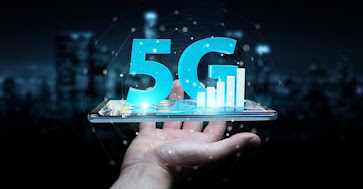5G Technology: The Future of Connectivity
5G Technology: The Future of Connectivity
5G, the fifth generation of wireless technology, has been the talk of the town for the past few years. With the roll-out of 5G networks underway, the world is on the cusp of a technological revolution that promises to change the way we live, work and play. In this blog, we will explore the basics of 5G technology, its benefits and the challenges that lie ahead.
What is 5G Technology?
5G technology is the next generation of wireless communication that promises to offer faster, more reliable and secure connectivity. The 5G network will have faster download and upload speeds, lower latency, and the ability to connect to a larger number of devices. It will allow for more efficient use of network resources, making it ideal for applications such as IoT, virtual and augmented reality, and autonomous vehicles.
Benefits of 5G Technology
Faster Speeds: 5G technology promises to offer faster download and upload speeds compared to previous generations of wireless technology. This will revolutionize the way we use the internet, making it possible to download high-definition movies in seconds and stream live events without buffering.
Lower Latency: The low latency offered by 5G technology will enable real-time communication, making it ideal for applications such as remote surgery, virtual reality, and gaming.
More Devices: The 5G network will be able to connect to a larger number of devices compared to previous generations, making it ideal for the Internet of Things (IoT) and other connected devices.
Improved Efficiency: The 5G network will be more efficient in terms of network resources, making it possible to handle the growing number of connected devices without sacrificing performance.
How 5G Works :
5G technology uses several advanced technologies to provide faster and more reliable connectivity compared to previous generations of wireless technology. Here are some of the key technologies used in 5G:
Millimeter Waves (mmWave) Technology: 5G technology uses high-frequency millimeter wave (mmWave) spectrum to provide vast bandwidth for high-speed data transfer. This technology uses frequencies in the range of 30 GHz to 300 GHz, compared to traditional 4G frequencies which operate at around 2 GHz.
Beamforming: Beamforming is an advanced antenna technology that uses multiple antennas to focus the radio signal in a specific direction, providing better signal coverage and improved network efficienc
y.Massive MIMO (multiple-input multiple-output): Massive MIMO is an advanced antenna technology that uses multiple antennas at the base station and the user device to improve network capacity and coverage. This technology allows for a larger number of devices to be connected simultaneously to the network.
Network Slicing: Network slicing is a technology that allows multiple virtual networks to run on a shared physical infrastructure, providing customized services for different types of applications. This enables service providers to provide different levels of quality of service (QoS) and security for different types of applications, such as virtual reality and autonomous vehicles.
Cloud-Native Networking: Cloud-native networking is a technology that uses cloud computing to manage network resources more efficiently. This technology allows network functions to be virtualized and run in the cloud, providing a more flexible and scalable network infrastructure.
Non-Standalone (NSA) and Standalone (SA) Architecture: 5G technology can be deployed in two modes, Standalone (SA) and Non-Standalone (NSA). NSA mode uses existing 4G infrastructure to provide 5G services, while SA mode uses a completely new 5G infrastructure to deliver standalone 5G services.
In conclusion, 5G technology leverages a combination of these advanced technologies to provide faster and more reliable connectivity, enabling new applications such as virtual and augmented reality, autonomous vehicles, and the Internet of Things (IoT) to become a reality.
Challenges :
Infrastructure: Implementing 5G technology requires significant investments in infrastructure, including new base stations and fiber optic cables.Spectrum Allocation: 5G technology requires access to a large amount of spectrum, which is a finite resource. This has led to competition for spectrum between telecommunications companies and other industries such as the military.
Interference: The higher frequencies used by 5G technology are more susceptible to interference, which can impact network performance.
Security: With the increasing number of connected devices, the 5G network will face new security challenges that need to be addressed.
Conclusion
5G technology has the potential to revolutionize the way we live, work and play. Its faster speeds, lower latency, and ability to connect to a larger number of devices will enable new applications and services that were previously not possible. However, the challenges ahead should not be underestimated, and continued investments in infrastructure and security will be needed to ensure that 5G technology delivers on its promises.






Comments
Post a Comment